Spiny Amaranth
Undesired, Invasive Weed….
Becomes our Valuable Resource
PERMACULTURE PRINCIPLE:
1. Observe and interact: By taking time to engage with nature we can design solutions that suit our particular situation.
Spiny Amaranth:
Amaranthus spinosus, commonly known as the spiny amaranth, spiny pigweed, prickly amaranth or thorny amaranth.

Processed with VSCO with hb2 preset 
Processed with VSCO with 6 preset
Spiny pigweed, also known as spiny amaranth, is one of the most common weeds seen in pastures
Purdue University – Weed management in Pastures: Spiny Pigweed
Is this a weed? You can eat the seeds, which some say makes Amaranth the next Quinoa.
You can eat the leaves, which some say makes it the next Kale.
Having these multiple food sources from the same plant makes Amaranth a multi purpose crop.
Is this the crop of the future?
We already know it was the crop of the past. Amaranth is the ancient grain of the Aztec, however much more than that. This powerful plant was an integral part of their culture and worship.
Amaranth is a Pseudo grain which contains no Gluten and is high in protein.
Nutrition Facts
Amaranth
| Amount Per 1 cup (193 g) |
| Calories 717 |
| % Daily Value* | |
| Total Fat 14 g | 21% |
| Saturated fat 2.8 g | 14% |
| Polyunsaturated fat 5 g | |
| Monounsaturated fat 3.3 g | |
| Cholesterol 0 mg | 0% |
| Sodium 8 mg | 0% |
| Potassium 980 mg | 28% |
| Total Carbohydrate 126 g | 42% |
| Dietary fiber 13 g | 52% |
| Sugar 3.3 g | |
| Protein 26 g | 52% |
| Vitamin A | 0% | Vitamin C | 13% |
| Calcium | 30% | Iron | 81% |
| Vitamin D | 0% | Vitamin B-6 | 55% |
| Cobalamin | 0% | Magnesium | 119% |
But what about the Spiny ones?
PERMACULTURE PRINCIPLE:
5. Use and value renewable resources and services: Make the best use of nature’s abundance to reduce our consumptive behavior and dependence on non-renewable resources.
We really like this plant. We are really excited to continue to facilitate the varieties we prefer, while utilizing the resources of the one we do not… the spiky one.
PERMACULTURE PRINCIPLE:
6. Produce no waste: By valuing and making use of all the resources that are available to us, nothing goes to waste.
Fermented Plant Juice
Fermented Plant Juice (FPJ) comes from Han Kyu Cho’s Korean Natural Farming. FPJ is a bio liquid fertilizer obtained after a fermentation process of plant matter and brown sugar.
The fermentation produces a rich enzyme and microorganism solution full of Lactic acid bacteria (LAB) and yeast as well as the chlorophyll from the plants tissue.

Processed with VSCO with l6 preset 
Processed with VSCO with a6 preset 
Processed with VSCO with l4 preset 
Processed with VSCO with c8 preset

PERMACULTURE PRINCIPLE:
11. Use edges and value the marginal: The interface between things is where the most interesting events take place. These are often the most valuable, diverse and productive elements in the system.
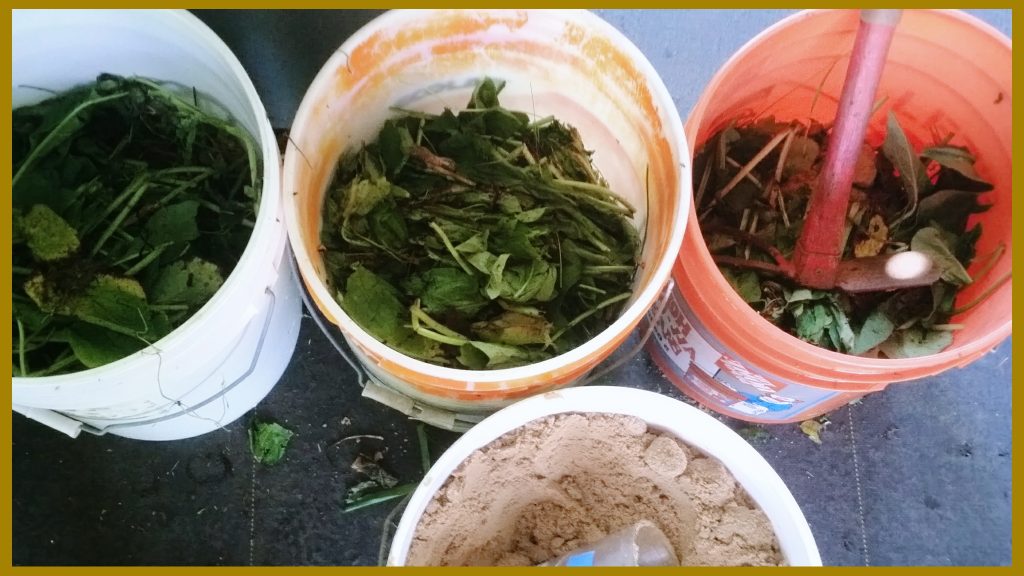
It is when Yeast meets the carbohydrate source (sugar) that the fermentation process is activated and energy obtained. It’s when the Bacteria meets the carbohydrate source which creates the lactic acid.
These are moments of edge ~ which creates a third experience happening from the two meeting. This is when the most valuable, diverse, and productive elements occur.

PERMACULTURE PRINCIPLE:
2. Catch and store energy: By developing systems that collect resources at peak abundance, we can use them in times of need.

After the fermentation is complete – we strain the plant matter out of the fermented liquid. Valuing the resource, we utilize the input for nutrient cycling into our land and gardens. We also store the excess for future applications and distributing.
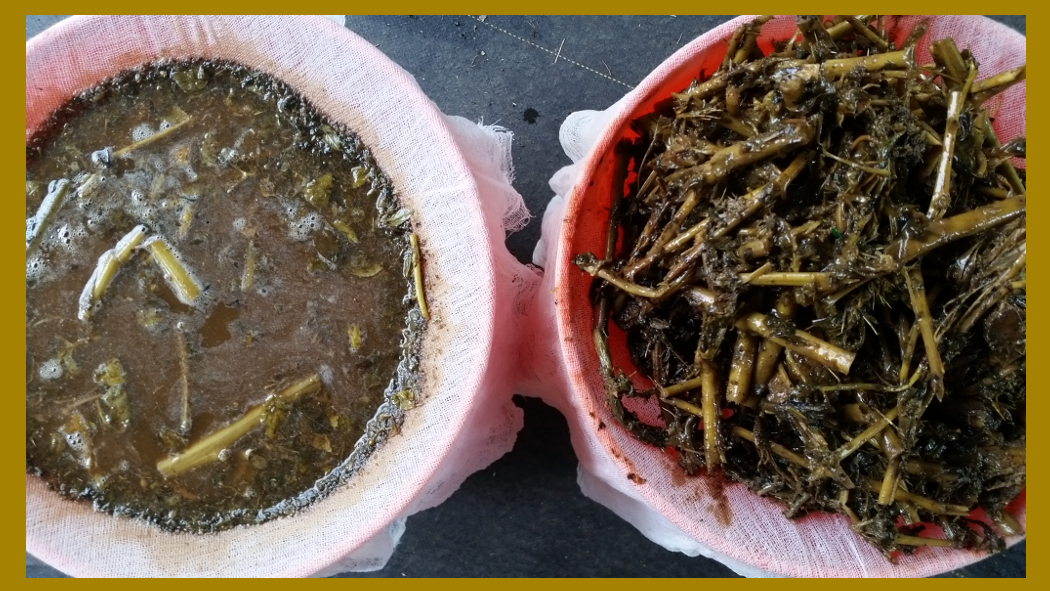
Below is the FPJ after being strained and stored, continuing to be alive and activated for application.
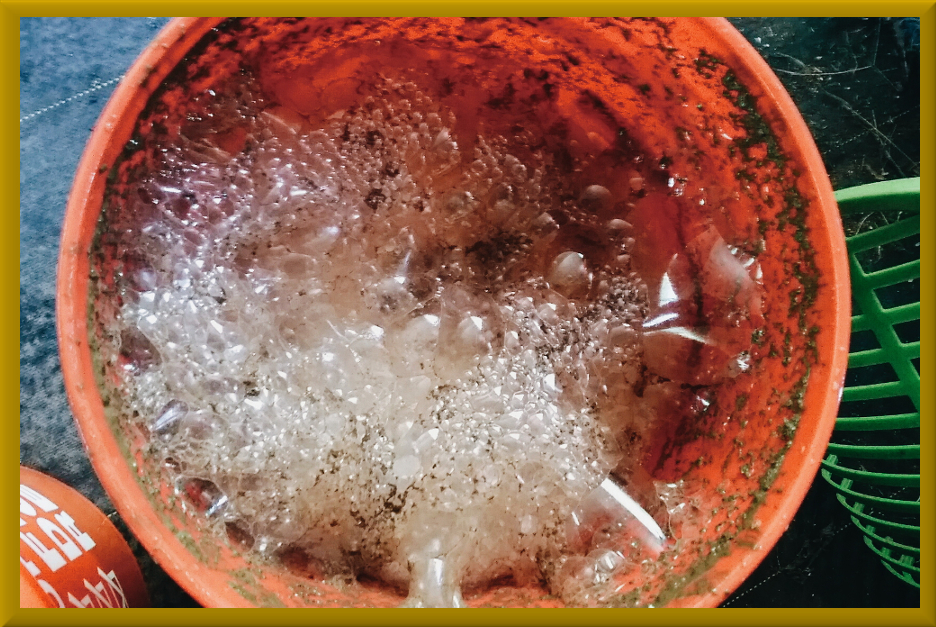
PERMACULTURE PRINCIPLE:
8. Integrate rather than segregate: By putting the right things in the right place, relationships develop between those things and they work together to support each other.
To apply our FPJ to the land, we do a soil soak at sundown to facilitate the soil health and plants through Transpiration. Additionally we do a Foliar Feeding for the leaves and stems. The optimum temperature to apply a foliar feed is about 72 degrees. This is the temperature and period when Stomata, the small pores in leaves are open. Temperature has significant effect on the permeability of the wall of the guard cells of the Stoma.
For us here in Hawaii, that means getting up and applying a Foliar Feeding before sunrise for optimal assimilation.

But we don’t mind. We get to spy on some really cool things in the dark.
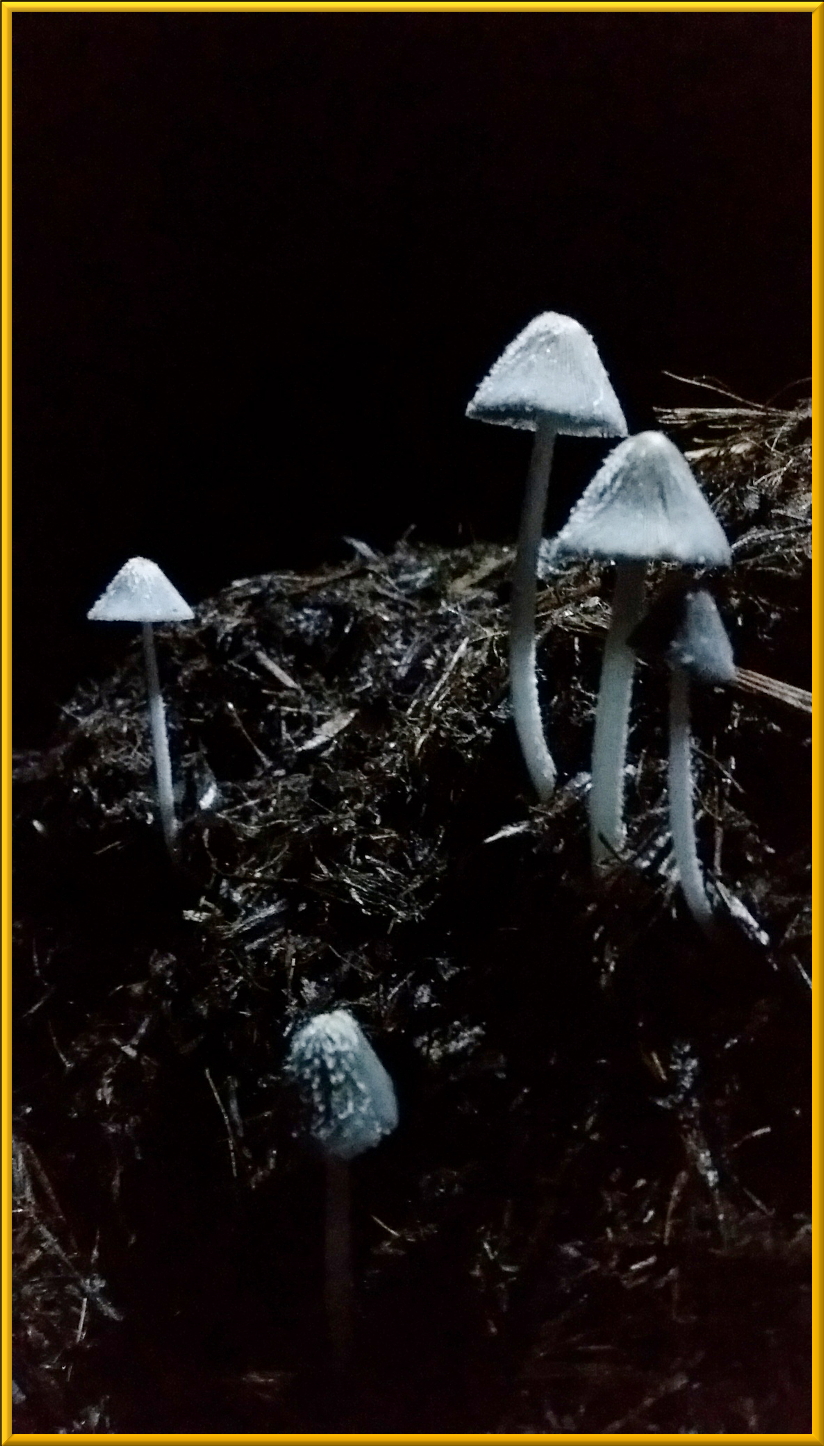
To get the full recipe, directions and information on making Fermented Plant Juice and other Korean Natural Farming Inputs, please refer to
Confessions From The Soil:
www.ConfessionsFromTheSoil.com
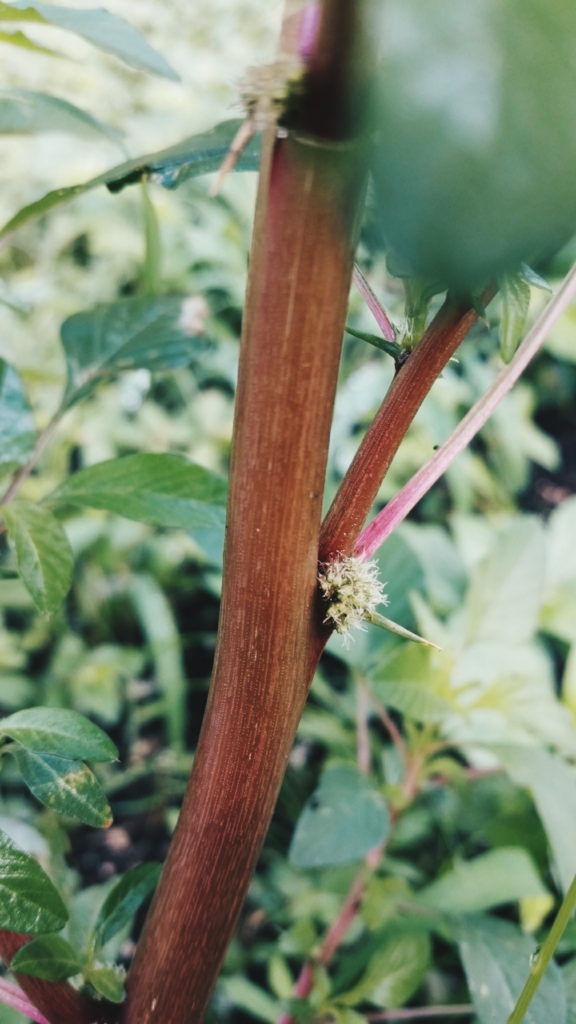
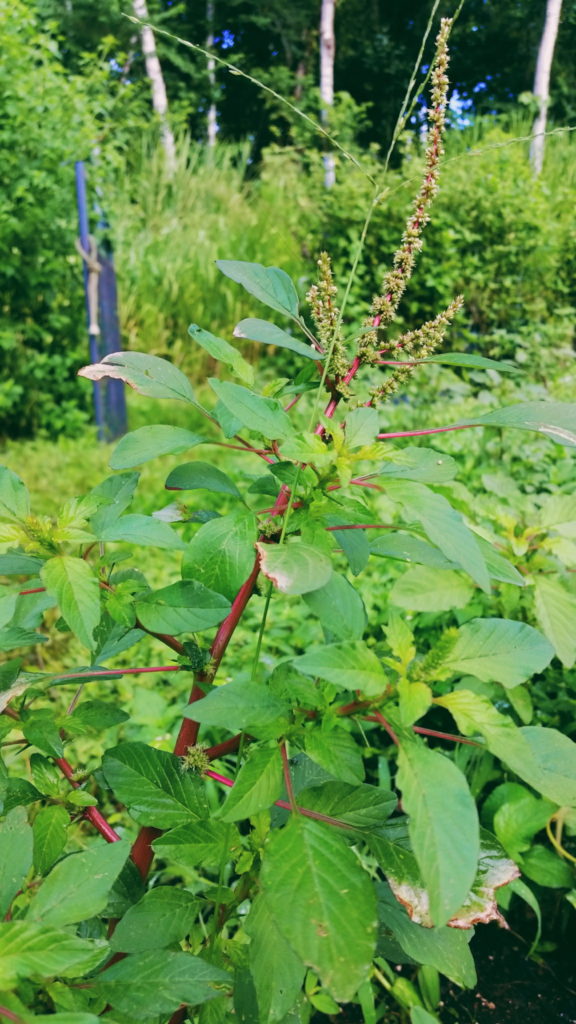
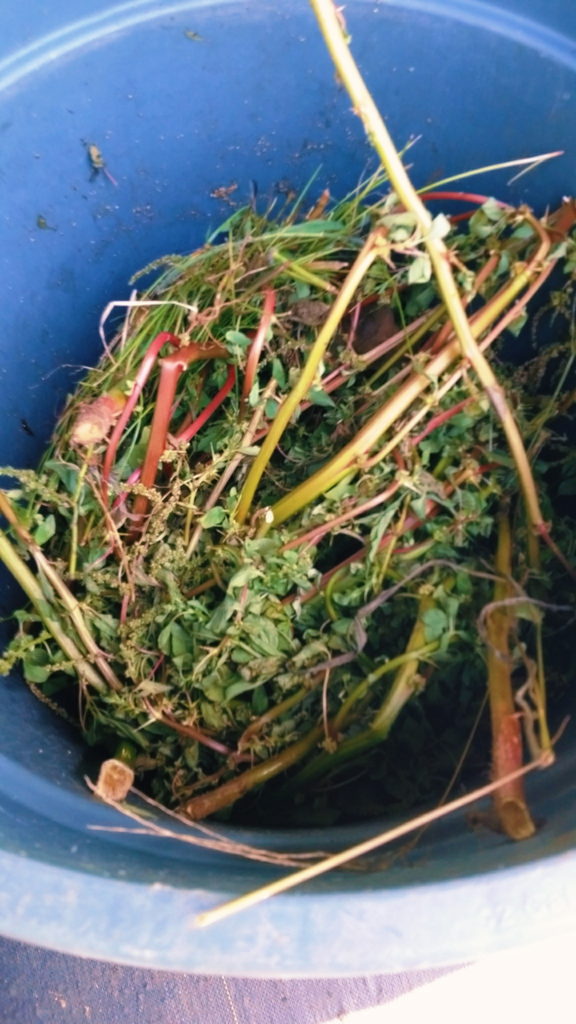
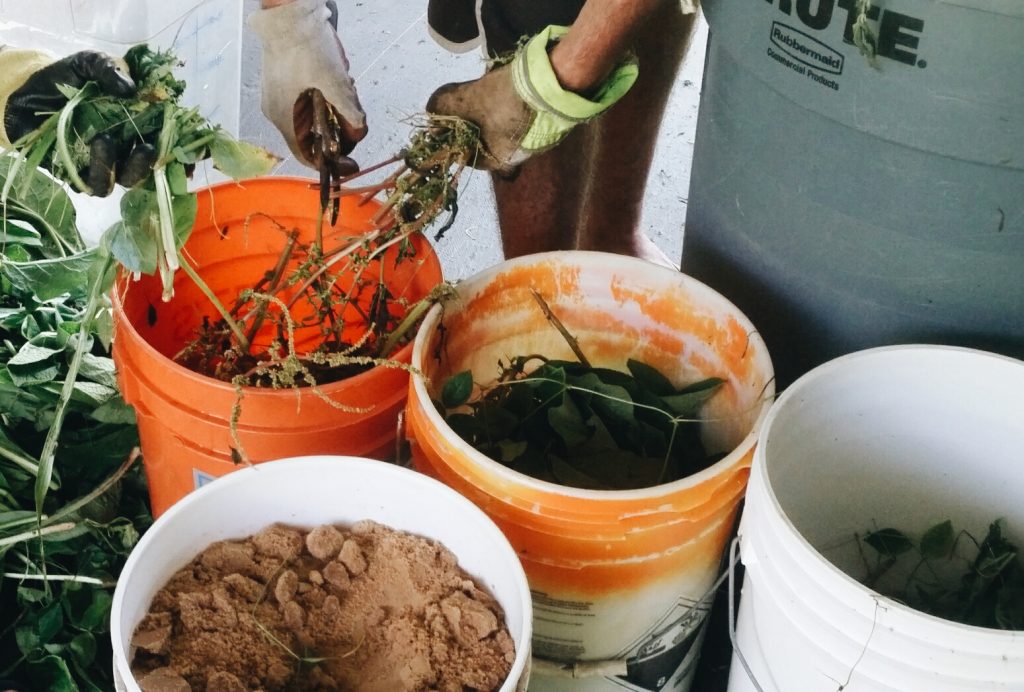

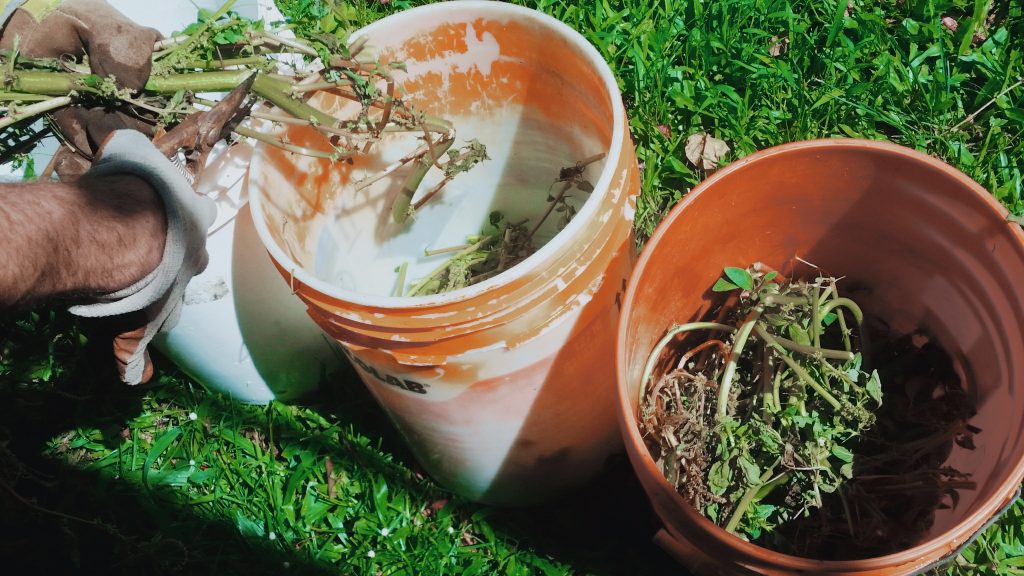
Wow that s so cool to feed live and nutrient back to the soil naturally